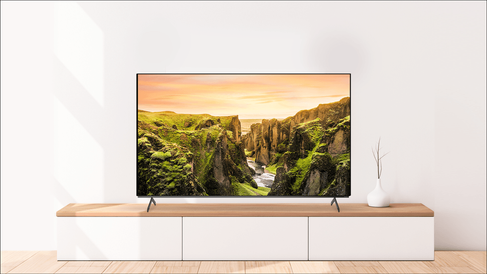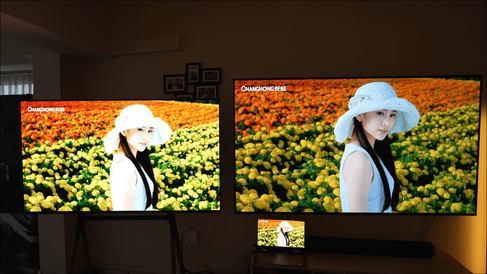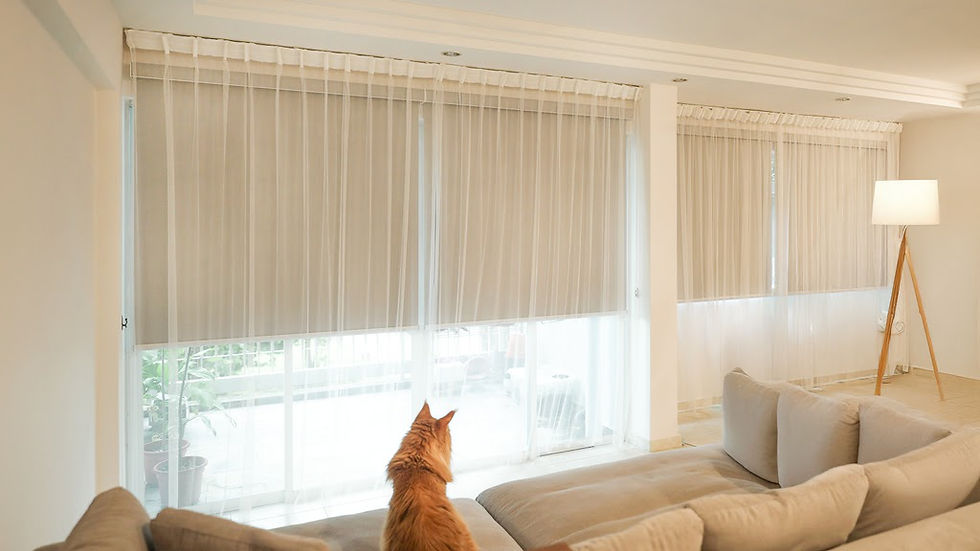First OLED TV From PRISM+ || Alpha Series 65AL
- A2K
- Apr 21, 2022
- 5 min read
Updated: Sep 2, 2023
Over the last few years Prism+ has been making waves in the market with a huge push into the TV space. While they were innovating in more standard LCD TVs, those were just incremental changes. This year Prism+ has taken a huge step with the first OLED TVs being priced really aggressively. The question remains: did they cut loads of corners to achieve this price or is it actually a really good deal? Let's find out!
So this is the newest addition from their Alpha series, the 65AL. Currently it comes in at 2799 SGD, but like most items from Prism+ - they seem to always have some sort of promotion with further discounts. Our unit came with free delivery as well as free digital antenna and a bunch of subscriptions.
We have it mounted on the Kanva TV stand and I must say it looks pretty nice. If you decide to use it as is, then it comes with small legs and can be kept on a TV console or alternatively it can be attached to a wall mount. The TV itself is very thin - in fact it's even thinner than our LG C1. While it may look nicer that way, this does have some drawbacks as some OLED TV’s have heatsink at the back to dissipate extra heat. By the way - if you buy this TV - make sure to remove the front and back protective film to ensure your panel does not overheat.
In terms of specs - this is a 65 inch 4K display, running at 60 Hz refresh rate. It supports most audio and visual formats such as Dolby Vision, HDR 10 and HLG, as well as Dolby Atmos and DTS. It comes with three HDMI 2.0 ports, with 1 of them supporting ARC. There are also two USB 2.0 ports, as well as an ethernet port. For wireless connectivity it has Wi-Fi and Bluetooth. It has a removable power cable which is nice as some users may want to change the length of it.
Just like the previous generations of Prism+ TVs, this one features Android TV, which is great! It provides the most comprehensive app store that keeps on growing. Personally I only use a few streaming apps on our TV but having more options is always better.
If you have ever owned a Prism TV then you will be familiar with this remote. It works OK and has a bunch of shortcuts for the main streaming services. I like that it is communicating via Bluetooth so you actually don't even need to point it at the TV. I still prefer the Magic remote from LG which can also be used as an air mouse and that is just next level ergonomics.
Now let's talk about performance. On the Prism website it states that the TV has 125% DCI-P3 colour coverage. We did our own tests using Portrait Displays Calman color calibration software, and with out-of-the box settings we found it has 157% of BT.709 colour space coverage and 106% coverage of DCI-P3 colour space.
Performance wise I am actually really impressed with this TV, but don’t take my word for it - we placed it right next to our top-of-the-line LG C1. To keep things fair we reset both of them to factory default settings so what you see is what you get without any tweaking.
The first thing that was very noticeable is the brightness setting - Prism seems to be set to a much brighter profile. This makes sense as the levels of ambient light in Singapore are pretty high and you have to make sure TV performs well. In some cases it was so bright when compared to our C1 that our camera was overexposed. We kept it that way to ensure both screens show up reasonably well. We also found that Prism is more contrasty and vivid to the point where colours just seem unnatural. And while side by side LG looks kind of bland.
So we decided to adjust both of them to a more neutral setting to make them more true to life. On both TV’s we disabled all the post processing features as well as sharpening effects. LG was set to be brighter, Prism brightness was turned down, changed colour mode to warmer tone, reduced contrast as well as saturation.
Have a look at these clips after the changes. Both TV’s look almost identical with very subtle differences that I feel could be matched completely had we spent some more time on it. Inside they both are using LG Display OLED panels with their own secret sauce settings to make them as they are, so results are not exactly surprising.
Click on the video above to hear a sound comparison tests, starting with Doctor Strange trailer (timecode 4:37), then some voice samples of no other than former president of the US Mister Obama presenting the new Netflix show about nature, and lastly a quick comparison while listening to music.
I’d give the win to LG mostly because it has better separation with a somewhat reasonable base, but my ultimate advice would be as always: to get a sound system or a soundbar. If you are spending multiple thousands of dollars on the TV, you should really invest at least a third of that amount on sound. Prism actually has new soundbars coming out - let us know in the comments below if you would like us to check them out.
This Prism OLED TV certainly has less features than LG C1. One of the things you would lose out on is the ability to automatically calibrate the display by connecting directly to the calibration module. LG TV’s are supported by Calman software and they sell LG home licences for those who want to get the most accurate picture. With Prism you would need to do calibration in a more manual approach.
There is also a whole stack of features that LG TVs have for protecting the OLED panel such as pixel refresher which runs every 4 hours to prevent image retention. There is also screenshift and logo luminance adjustment. I checked in with Prism and they have confirmed that their OLED’s also have these features as it is something that comes with the panel. Main difference is that Prism does not have a manual way to trigger any of them so it just runs in the background which in many ways is sufficient.
If we were to place this TV in LG's line-up then it would end up next to LG A1 as all the features seem to be very comparable. Going up to B1 would provide you better speakers, higher refresh rate running at 4K 120Hz and gaming specific features such as variable refresh rate, Nvidia G-Sync and Freesync.
This is where it gets a little challenging for Prism as LG is currently doing a refresh cycle where next gen OLED TV’s are coming out driving the price of current TV’s down. As of writing this video we can find LG A1 selling at 3199 SGD and LG B1 which is the higher-end version for 2999 SGD, that is only 200 dollars more than Prism 65 AL which is a great deal.
This brings us well to the conclusion, Prism diving into the more premium OLED market and bringing lower priced TV with comparable performance to LG is very impressive. There are a few things they can improve on, mainly toning down the saturation to make it a little bit more natural out of the box to save the average user from the need of adjusting it.
As to which TV you should go with is going to be up to your requirements. For most people who just want to watch shows and movies this is a good deal especially if you utilise all the extra offers. On the other hand if you can stretch the budget and get LG B1 on a deal, you can then also add gaming functionality and enjoy the perks of a more mature brand in this particular space. Overall I am really happy to see more competition as this is always going to bring better and cheaper products to you as a consumer.















































































Comments